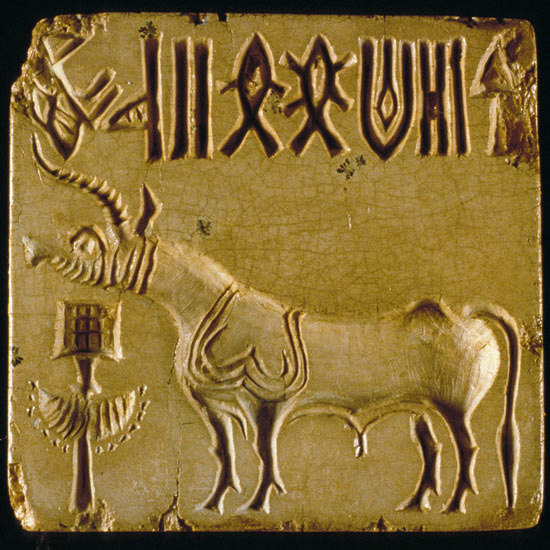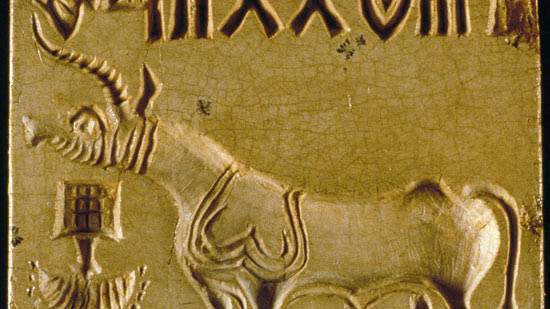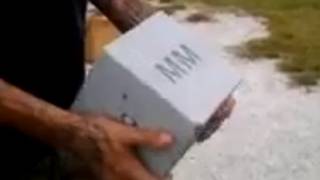A Rosetta Stone for the Indus script?
Source: ted.com
Do you love a good mystery and ancient texts? Rajesh Rao sure does. He is a computational neuroscientist at my alma mater, the University of Washington in Seattle. He has devoted much of his professional life to cracking "the mother of all crossword puzzles": How to decipher the 4000 year old Indus script,
To do this, Dr Rao uses computational modeling to understand the human mind in two ways: first, he develops computer models to describe how human minds think, and then second, he applies these models to the task of deciphering the 4,000-year-old script of the Indus valley civilization. This interesting video provides a glimpse into his methods and logic.
Scientists claim to have found language of ancient Indus civilisation
By Ian Sample | guardian.co.uk

If true, deciphering the words may unlock the secrets of one of the most mysterious civilisations known
Elaborate symbols drawn on to amulets and tablets by an ancient civilisation belong to an unknown language, according to a new analysis by researchers.
The controversial claim raises the prospect of deciphering the written words of one of the most mysterious civilisations known, and so opening a window onto the ancient culture.
The Indus civilisation flourished in isolation 4,500 years ago along the border of what is now eastern Pakistan, but almost no historical information exists about the people and their long-lost community.
Archaeologists working in the region have unearthed a rich hoard of artifacts, including amulets, seals and ceramic tablets, many of which are embellished with the unusual symbols.
The discovery of ancient objects belonging to the Indus has split the scholarly community, with some claiming the symbols form a primitive language and others arguing they are simply pictograms.
More than 500 distinct Indus symbols have so far been identified, which include what appear to be representations of fish, rings, men and cowheads. In 2004 one researcher offered $10,000 to anyone who could find a single Indus artifact adorned with more than 50 of the symbols.
Scientists at the University of Washington in Seattle and the Tata Institute of Fundamental Research in Mumbai decided to undertake an analysis of the symbols in the hope of settling the dispute over the Indus scripts once and for all.
Using a computer programme, the team compared patterns of Indus symbols with those found in known languages and other information systems, such as DNA and computer languages.
In some information systems a sequence of symbols can seem to be random, while in others, such as pictograms that represent deities and other concepts, there is usually a strict hierarchy that influences the order in which symbols appear. Spoken languages tend to fall somewhere between these two extremes, incorporating order as well as flexibility.
When the researchers ran the analysis on a compilation of Indus texts, they found that the patterns of symbols were strikingly similar to those in spoken languages. The study, which appears in the journal Science, likens the Indus script to the ancient languages of Sumerian from Mesopotamia and Old Tamil from the Indian subcontinent.
"At this point, we can say that the Indus script seems to have statistical regularities that are in line with natural languages," said Rajesh Rao, a scientist at the University of Washington who led the study.
The team is now examining more Indus scripts in the hope of understanding its syntax and grammatical rules.
Asko Parpola, emeritus professor of indology at Helsinki University said he was optimistic the language could be deciphered.
"Language is one of the hallmarks of a literate civilisation. If it's real writing, we have a chance to know their language and to get to know more about their religion and other aspects of their culture. We don't have any literature from the region that can be understood," Parpola said.
Scholars of the 19th century were only able to decipher Egyptian hieroglyphics after discovering the Rosetta Stone, which was inscribed with Egyptian scripts translated into ancient Greek. To decipher the Indus language, scholars may need a similar discovery.
Source: guardian.co.uk






















